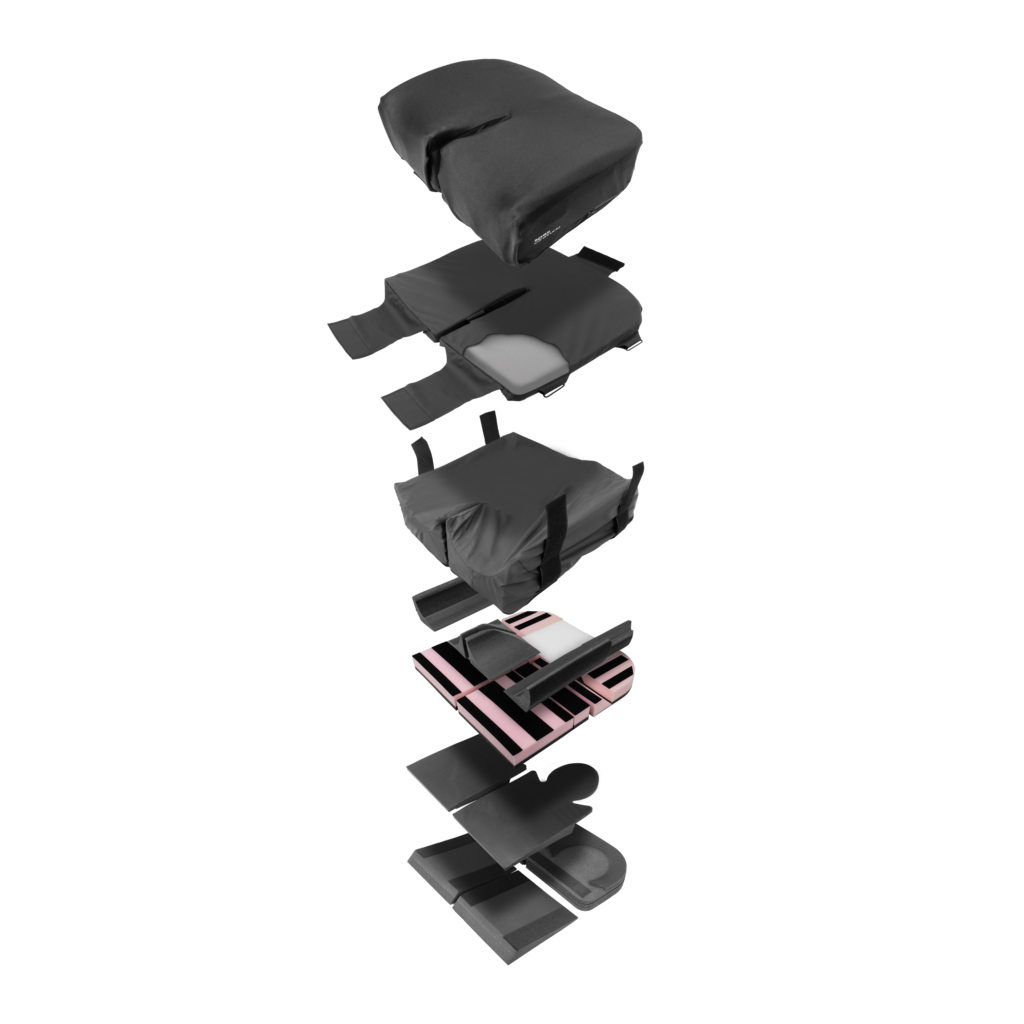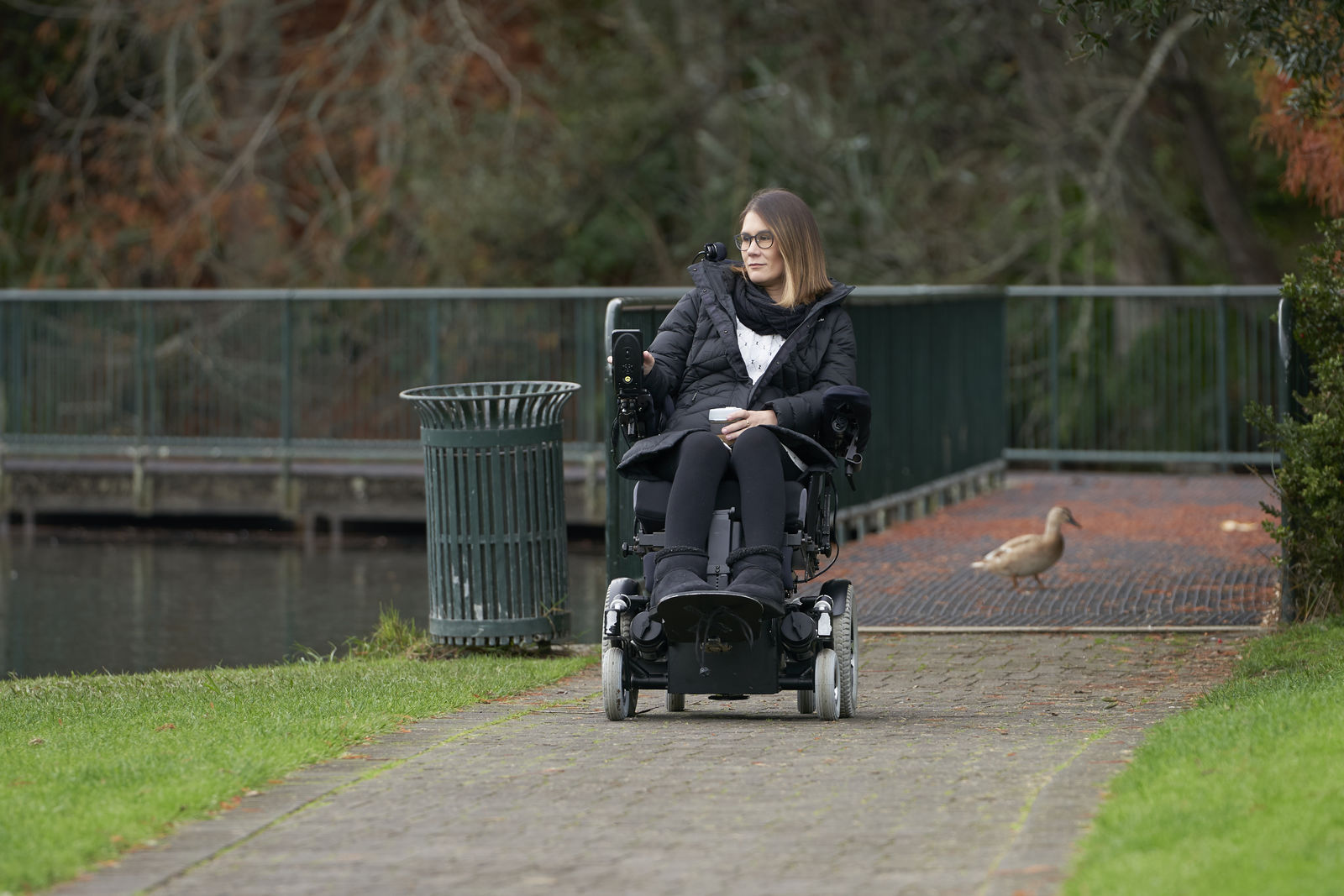Before exploring comfort in wheeled seated mobility, it is useful to look at how comfort is defined in the dictionary:
| Lexico Online Dictionary | Oxford Learners Dictionary |
1. A state of physical ease and freedom from pain or constraint.
|
1. The state of being physically relaxed and free from pain; the state of having a pleasant life, with everything that you need.
|
2. The easing or alleviation of a person’s feelings of grief or distress
|
2. A feeling of not suffering or worrying so much; a feeling of being less unhappy. |
| 3. A person or thing that helps you when you are suffering, worried or unhappy. | |
| 4. A thing that makes your life easier or more comfortable. |
Comfort is not just physical but emotional as well (see highlighted sections in red above) and I have found this to require careful consideration in my own work.
With over 20 years’ experience in neurological rehabilitation, I am often questioning how we can optimise comfort for individuals experiencing illness, impairments or loss of function. Comfort needs to incorporate both an emotional and a physical aspect. It is not simply ‘enough’ to be pain free or physically at ease as emotional comfort is often just as, or even more, important for individuals to feel safe and reassured following a loss of function due to illness or injury. This emotional comfort can affect engagement in therapy, acceptance of consequent changes in ‘doing’ or functional ability or even acceptance and use of prescribed equipment. I have also found that interventions offered, service processes and therapeutic rapport can either support or endanger emotional comfort.
My interest in postural care increased my curiosity about how we optimise comfort even further and raised additional questions relating to how this is optimised for wheelchair users. I know that a general goal of a wheelchair is to promote comfort for the user (Arbesman, 2014; Costigan & Light, 2011). The literature is good at linking this to physical ease, such as being pain free, or being relaxed – there is a lot of scientific content relating to the materials chosen in wheelchair seating and pressure management risk that address physical comfort. It is good to note that physical comfort can be variable and will be affected by a number of factors, such as:
- The reason why the person needs the wheelchair, what their needs will be in the future, the medical management of their clinical condition and physical changes as they age (Åkerblom et al, 2018; DiPiro et al., 2014; Vogtle, 2009; Siddal & Loesser, 2001; Pope, 2007),
- How well the wheelchair fits the person’s body shape (Kon, 2015),
- How adaptable the wheelchair is to further changes required (Costigan & Light, 2011)
- How long the person may need/plan to be seated in the wheelchair (Maradei et al., 2016; Gonçalves et al., 2014; Kim, Yo & Woo, 2014)
- The ability of the wheelchair user to adjust his/her position (Lange & Minkel, 2018, p.61-84)
- The environment and terrain where the wheelchair will be used (think of an uneven, gravel terrain versus a smooth, flat indoor surface), as well as the activities the wheelchair user will perform (Garcia-Mendez et al, 2013; Palisano et al., 2003)
- How easy the wheelchair is to use/push and how easy it is to transfer in and out of,
- Additional features and accessories being used on the wheelchair like contouring, tilt, lateral trunk supports, etc., and
- How well the wheelchair facilitates the person engaging in their chosen and meaningful activities.
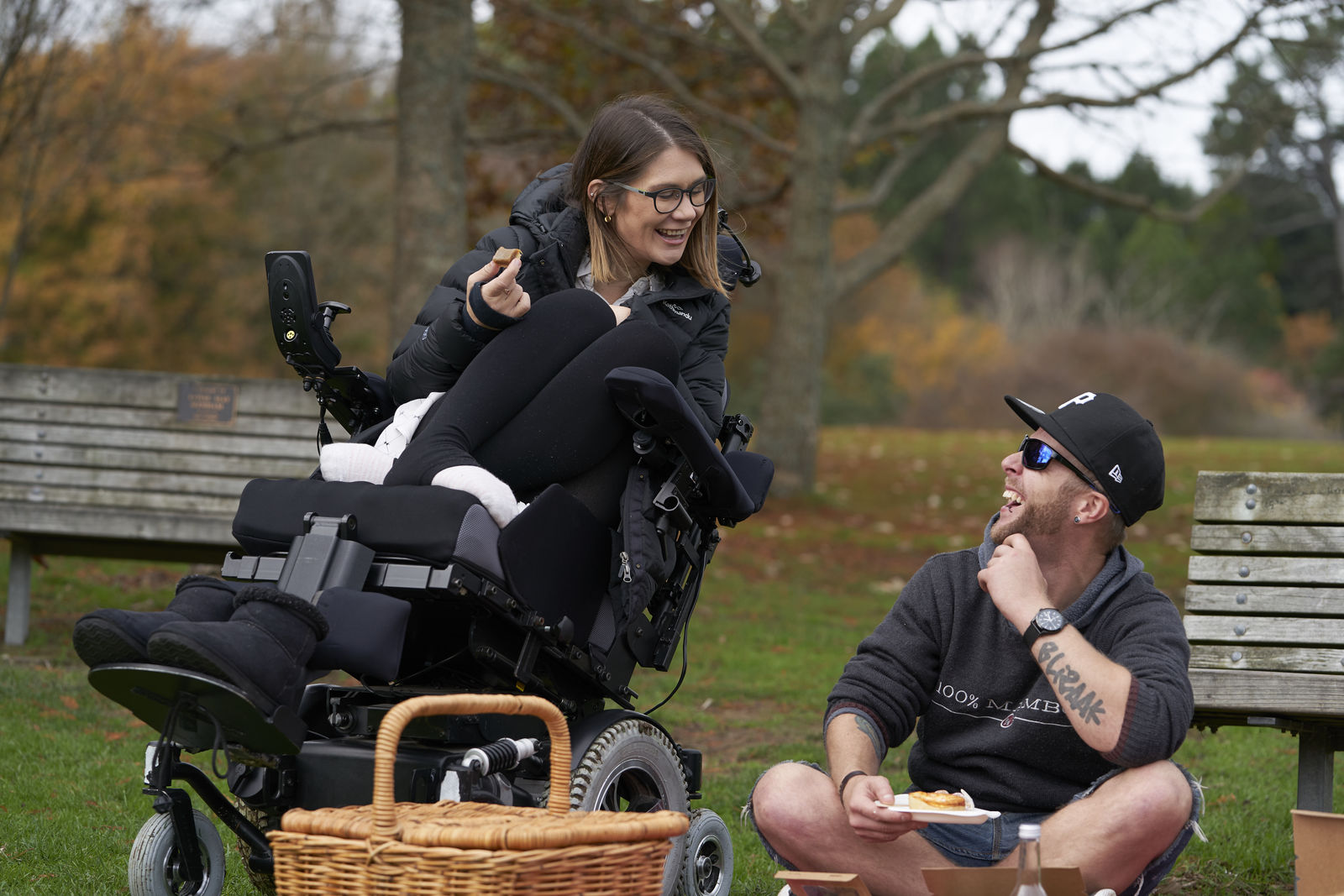
Physical and emotional comfort must be considered in a wheelchair – good quality of life requires participation in meaningful activities.
A wheelchair is primarily prescribed to compensate for a loss of the person’s ability to walk, but it needs to address so many more factors to allow someone to ‘do’ things, to live well, to enjoy things and to be less distressed by changes brought from injury or illness. Let us consider some of these emotional considerations:
- A loss of our ability to walk can lead to changes in mood, reduced participation in activities, having to learn new ways of doing (which can be a challenge) and can also lead to isolation of the wheelchair user (La Rocca, 2011; Palisano, 2010; Iossen, 1996).
- Wheelchair users may require different wheelchairs for different environments to maximise participation (Connor & Smith, 2008).
- Being independent and being empowered to make personal choices about services and equipment we use can contribute to our emotional wellbeing – “It is therefore vital that the person who will be using the wheelchair is as informed and involved as possible in any decision making associated with obtaining or modifying it [the wheelchair].” (Connor & Smith, 2008)
- Wheelchair use can be affected by the physical factors listed above, as well as potential stigma attached to wheelchair user, potentially more so when harnesses or belts may be visible (Jones & Radar, 2018), and/or whether the wheelchair is aesthetically acceptable to the wheelchair user to support their self-identity.
- A wheelchair can offer the ability to mobilise, but this depends largely on access to assessment and services and funding available to obtain a wheelchair which can create financial worries for the wheelchair user (Ryan, 2019; Frank, 2018; Ryan, 2017, Forster, 2017).
- Acceptance of a wheelchair can also be affected by how accessible and easy the process is to acquire, maintain and review the wheelchair, as well as how it supports participation in those meaningful and familiar activities long-term. Jones (2018) highlights that a wheelchair can help users to “augment and/or overcome their mobility limitations to enhance participation and may be influenced by other environmental factors, such as support and relationships, attitudes, services, and policies.”
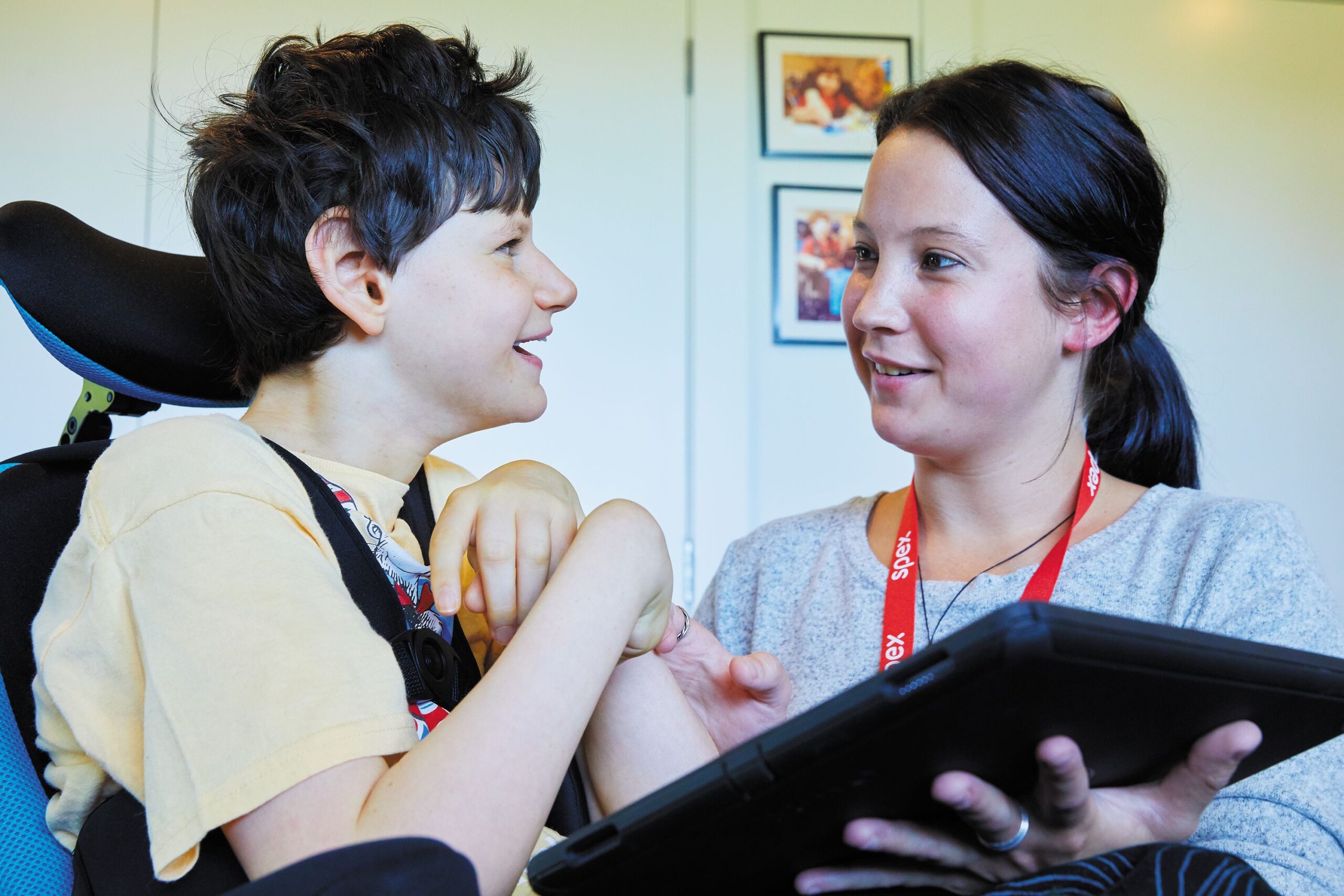 Participation and inclusion helps to improve emotional comfort
Participation and inclusion helps to improve emotional comfort
Take-home thoughts when considering wheelchair provision to optimise comfort.
| Physical Comfort | Emotional Comfort |
| Physical ease of wheelchair use needs to consider the wheelchair user and the caregivers | Wheelchair use and acceptance depends on emotional aspects individual to each wheelchair user and needs careful understanding to ensure that concerns and worries are addressed in the provided seating solution |
| What may be comfortable in one environment, may not be comfortable in another | The process of postural care and wheelchair prescription and maintenance can be emotionally distressing and anxiety-provoking (access, cost and requirement for equipment) |
| What may be comfortable for 10 minutes, may not be comfortable for an hour | Acceptance of accessories and the ‘look’ of the wheelchair is individual and should be discussed as part of the process |
| Wheelchairs need to be adjustable and matched to the person’s unique body shape and presenting functional needs in a multitude of activities, not just for mobilising from point A to B | Wheelchair users need to be informed and involved in decisions related to their wheelchair – the long-term management of wheelchair provision (assessment, review, repairs, adjustment of the wheelchair to meet postural and functional changes) is as important as the initial stages of wheelchair provision |
| Things can, and will, change over time | Functional and postural changes can have in impact on mood and participation |
A wheelchair needs to meet both physical and emotional needs, following a loss/deterioration of a person’s ability to walk, taking into account the unique individual needs and circumstances of the wheelchair user. Comfort needs to be considered within the process of wheelchair acquisition and long-term review with the aim to make life easier. Comfort also needs to consider more than just mobility – being able to communicate or participate in work or self-care activities are as important as moving from point A to point B. To maximise function and minimise pathology we need to consider the types of seating systems (e.g. modular or foam carved moulded), types of wheelchair chassis and, even, tyre selection.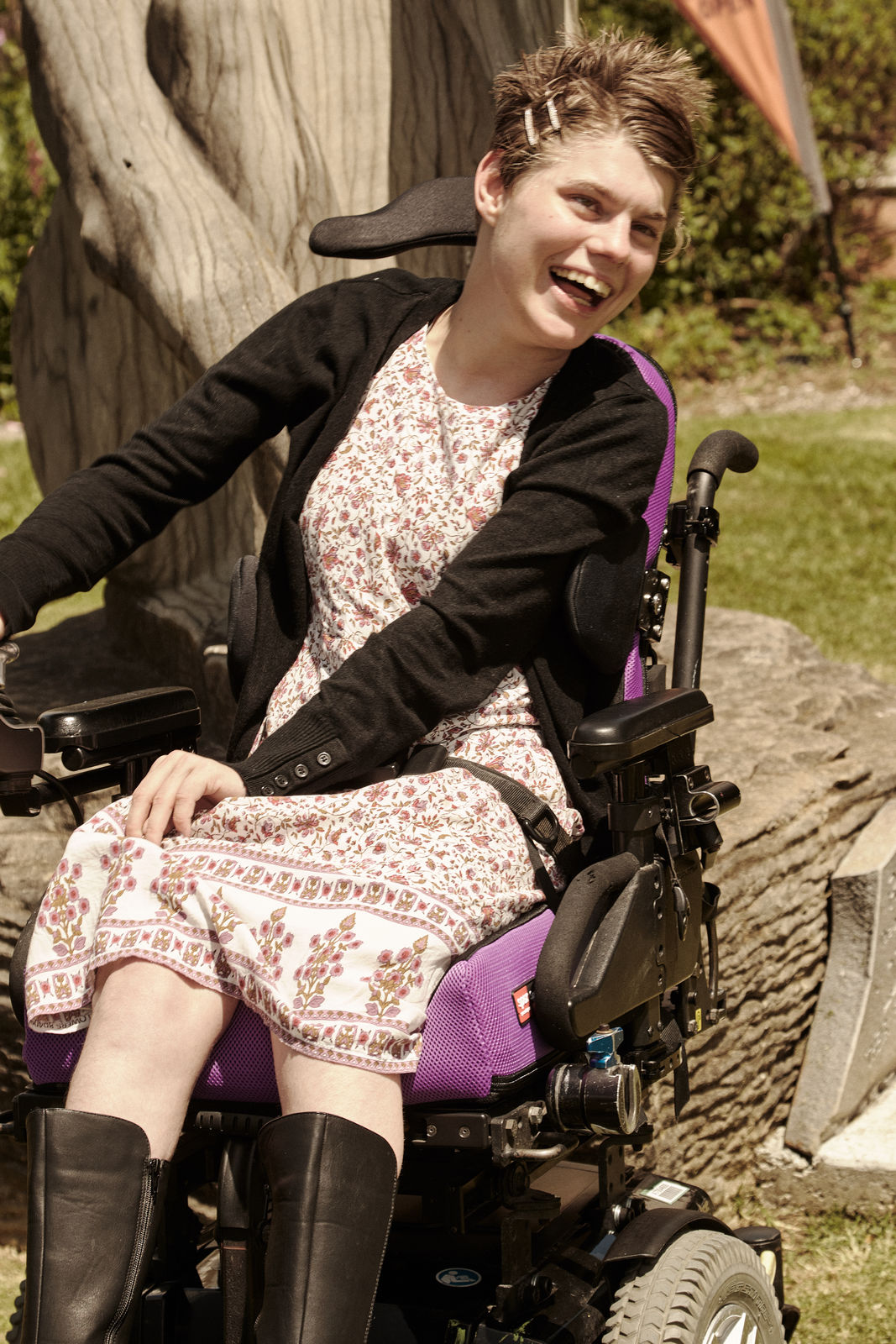
Meeting the emotional comfort of a wheelchair user can be difficult. As a clinician I often have time constraints, potentially limited assessments and only see wheelchair users for a snap-shot of time during the course of wheelchair provision. The wheelchair user’s circumstances change over time and are influenced by social factors, environmental factors and physical factors – this equipment is instrumental in supporting good quality of life providing we monitor its effectiveness and address factors that influence comfort.
A wheelchair can contribute towards a pleasant lifestyle, if it reduces physical discomfort, is functional, supports self-identity and can make life easier.
It is so rewarding for our Spex Ltd team to hear of the positive changes relating to physical and emotional comfort that have been achieved with the Spex modular seating technology, so please do continue to share your stories and feedback. A special thanks to Kylee, Alex and Holly for these wonderful photos!
- If you are a wheelchair user, how have your physical needs and emotional needs been met by the services supporting wheelchair provision and maintenance?
- If you are a clinician, how have you facilitated consideration of both physical and emotional comfort within your service delivery?
Please comment below and thank you for reading!
